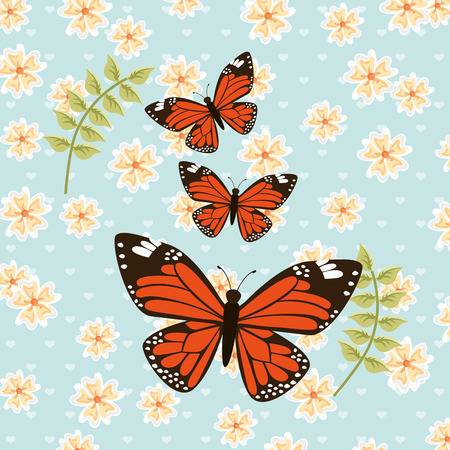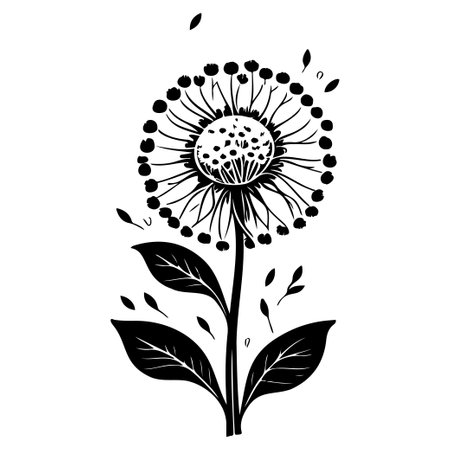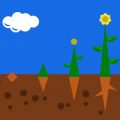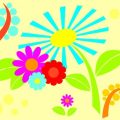Understanding the Importance of Pollinators
When designing a flower garden in the United States, it’s essential to recognize the vital role that pollinators play within local ecosystems. Pollinators, such as bees, butterflies, hummingbirds, and certain beetles, are not just beautiful visitors; they are key contributors to the health and productivity of gardens and wild landscapes alike. Without their tireless work transferring pollen from one flower to another, many native plants—and by extension, fruits, vegetables, and ornamental flowers—would fail to thrive. This not only affects garden aesthetics but also has far-reaching consequences for food production and ecological balance.
Why Pollinators Matter in American Gardens
In the United States, over 75% of flowering plants depend on animal pollinators. This includes both cultivated varieties in home gardens and wildflowers critical for native wildlife. Pollinators help ensure genetic diversity among plant populations and directly contribute to crop yields, making them indispensable partners for gardeners aiming for lush blooms or bountiful harvests.
Key Benefits Provided by Pollinators
| Benefit | Description |
|---|---|
| Enhanced Plant Reproduction | Facilitates cross-pollination which increases seed set and fruit quality. |
| Biodiversity Support | Maintains a diverse range of plant species, supporting birds and other wildlife. |
| Ecosystem Health | Promotes resilience against pests and diseases through diverse plantings. |
The Interconnectedness of Local Ecosystems
The activities of pollinators link your backyard flower beds to larger ecosystems found throughout North America. Their presence ensures that wildflowers provide habitat and food for countless insects, birds, and mammals. Thus, balancing access for these beneficial creatures while managing unwanted wildlife is foundational to maintaining vibrant, sustainable gardens that reflect both American biodiversity and gardening values.
2. Recognizing Common Garden Wildlife Intruders
Understanding which animals are likely to visit and disrupt your flower garden is an essential step in creating a balance between pollinator access and wildlife exclusion. Across the United States, several wildlife species are notorious for causing damage to garden beds, trampling flowers, or consuming buds and foliage. Identifying these intruders can help gardeners develop effective strategies that protect their blooms while still welcoming beneficial pollinators.
Typical Wildlife Species in U.S. Flower Gardens
Each region of the country may have its unique set of garden visitors, but there are some common culprits found throughout most areas. The table below highlights the most frequent offenders and the typical signs they leave behind:
| Wildlife Species | Common Signs of Presence | Potential Damage |
|---|---|---|
| Deer | Hoof prints, nibbled stems/leaves, droppings | Severe browsing on flowers, shrubs, and new growth; trampled plants |
| Rabbits | Neatly clipped stems, small round droppings | Eaten seedlings and young shoots; patchy bare spots in flower beds |
| Raccoons | Dug-up soil, scattered mulch, paw prints | Uprooted plants; disturbed garden layouts; occasionally eat flower bulbs |
| Squirrels | Dug holes, missing bulbs, gnawed stems/fruits | Theft of bulbs and seeds; damaged blossoms and fruits |
| Groundhogs (Woodchucks) | Bigger burrow entrances nearby, chewed leaves/stems | Substantial plant consumption; collapsed root zones due to tunneling |
| Birds (e.g., crows, sparrows) | Eaten petals/seeds, pecked fruit or buds | Mutilated flowers; scattered seeds; reduced pollinator activity if netting is used indiscriminately |
Why Identification Matters for Pollinator-Friendly Solutions
The first step toward balancing pollinator support with wildlife management is accurate identification of garden intruders. By knowing which animals are present and how they interact with your plants, you can select targeted exclusion techniques that minimize harm to pollinators such as bees, butterflies, and hummingbirds. For example, fencing may deter deer without blocking flying insects, while adjusting planting schemes can discourage rabbits yet still attract vital pollinators.

3. Garden Design Strategies to Attract Pollinators
Creating a flower garden that welcomes pollinators while managing wildlife exclusion begins with thoughtful design. The layout, plant selection, and garden features play vital roles in ensuring healthy pollinator activity throughout the growing season. When considering American climates and regions, it’s important to tailor your approach for maximum effectiveness.
Garden Layouts That Support Pollinators
Pollinators such as bees, butterflies, and hummingbirds are drawn to gardens that offer easy access and a diverse array of blooms. Arranging plants in clusters or drifts of the same species can help pollinators locate resources more efficiently. Incorporate pathways and open areas for safe movement, while using natural barriers—like hedges or low fences—to direct wildlife away from sensitive flower beds.
Sample Layout Ideas by U.S. Region
| Region | Layout Suggestion |
|---|---|
| Northeast | Curved beds with layered heights; integrate native shrubs at edges |
| Southeast | Raised beds for drainage; include shade structures for afternoon relief |
| Midwest | Windbreaks with tall grasses; prairie-style mass plantings |
| Southwest | Xeriscape zones; gravel paths separating native drought-tolerant flowers |
| Pacific Northwest | Mossy borders; rain gardens with pollinator-friendly perennials |
Selecting Plants for Regional Climates and Pollinator Preferences
The key to attracting a variety of pollinators is planting a mix of native flowering species that provide nectar and pollen across spring, summer, and fall. Choose cultivars well-suited for your USDA hardiness zone to ensure robust growth with minimal maintenance. Avoid double-flowered varieties as they often lack accessible nectar.
Recommended Native Plants by Region
| Region | Popular Pollinator-Friendly Natives |
|---|---|
| Northeast | New England Aster, Black-eyed Susan, Wild Bergamot |
| Southeast | Coreopsis, Purple Coneflower, Swamp Milkweed |
| Midwest | Purple Prairie Clover, Butterfly Weed, Bee Balm |
| Southwest | Pineleaf Penstemon, Desert Marigold, Blanket Flower |
| Pacific Northwest | Oregon Grape, Red-flowering Currant, Douglas Aster |
Incorporating Features That Benefit Pollinators and Manage Wildlife Access
Add features such as shallow water dishes with stones for pollinators to safely drink, or install bee hotels for solitary bee species. Use fencing styles that deter deer or rabbits but still allow smaller pollinators through. Mulch paths can discourage digging pests while giving butterflies a place to bask. By balancing these elements with local climate considerations and strategic plant choices, you’ll create a thriving habitat where pollinators flourish and unwanted wildlife is kept in check.
4. Effective Methods for Wildlife Exclusion
Successfully keeping unwanted wildlife out of flower gardens while ensuring pollinators can access blooms is a common challenge for American gardeners. Across the U.S., a variety of practical exclusion methods are employed to strike this balance, each with its own advantages and considerations.
Fencing Solutions
Physical barriers remain one of the most reliable ways to deter deer, rabbits, raccoons, and other mammals from entering flower beds. Choosing the right fencing depends on your local wildlife and garden layout:
| Fencing Type | Target Wildlife | Pollinator Access | Notes |
|---|---|---|---|
| Wire Mesh (hardware cloth) | Rabbits, groundhogs | Unimpeded | Bury 6–12″ underground to prevent burrowing; mesh size 1″ or less keeps out small animals. |
| Tall Deer Fence (7–8 ft) | Deer | Unimpeded (fence over plants) | Effective for deer but may require permits in some neighborhoods. |
| Electric Fencing | Raccoons, deer | Unimpeded | Use with caution around children and pets; not suitable for all residential areas. |
| Picket or Decorative Fence (short) | Dogs, cats, geese | Unimpeded | Mainly for larger animals; does not deter smaller mammals. |
Repellents and Deterrents
Chemical and natural repellents provide a non-lethal way to discourage animals from browsing without harming pollinators. Common options in the U.S. include:
| Repellent Type | Main Use | Pollinator Impact | Application Tips |
|---|---|---|---|
| Scent-based (e.g., predator urine, garlic sprays) | Deer, rabbits, squirrels | No harm if applied away from flowers; avoid direct contact with blooms. | Reapply after rain; rotate products to prevent habituation. |
| Taste-based (bittering agents) | Mammals chewing plants | No effect if not sprayed on open blooms. | Avoid spraying during flowering to protect pollinators. |
| Noisemakers & Motion-activated devices | Larger mammals & birds | No impact on insects. | Best for temporary relief; wildlife may adapt over time. |
| Homemade deterrents (hot pepper spray, soap shavings) | Squirrels, rabbits, deer | No risk if kept off flowers. | Avoid use near bee-attracting blooms. |
Cultural and Habitat Modifications
Altering garden conditions can make spaces less attractive to nuisance wildlife while remaining hospitable to pollinators:
- Select less palatable plants: Choose native species or varieties known for resistance to browsing by local wildlife—these often still attract bees and butterflies.
- Avoid food attractants: Remove fallen fruit, bird seed spills, and pet food that may draw unwanted visitors.
- Create buffer zones: Install gravel paths or low-growing groundcovers that deter entry by certain mammals but do not affect flying pollinators.
The Importance of Non-Toxic Approaches
Avoiding pesticides and toxic chemicals is key when managing wildlife exclusion in pollinator-friendly gardens. Opt for physical or behavioral deterrents whenever possible to maintain a safe environment for bees, butterflies, and beneficial insects essential for garden health.
Selecting the Right Method for Your Garden
The best approach often involves combining several strategies based on your region’s typical wildlife challenges and your specific landscape design. By thoughtfully selecting exclusion methods that do not restrict pollinator movement or rely on harmful substances, American gardeners can protect their floral displays while supporting local biodiversity.
5. Finding the Balance: Inclusive and Exclusive Practices
Achieving a thriving flower garden in the U.S. means both attracting beneficial pollinators and deterring unwanted wildlife. American gardeners have developed practical strategies that allow for this delicate balance, ensuring blooms are accessible to bees, butterflies, and hummingbirds while minimizing damage from deer, rabbits, or groundhogs. Below are tips and best practices rooted in American gardening experiences.
Practical Approaches to Harmonize Inclusion and Exclusion
Gardeners often combine a range of physical barriers, plant selection, and garden layout techniques. Here’s an overview of inclusive (pollinator-friendly) and exclusive (wildlife-deterring) actions:
| Inclusive (Welcoming Pollinators) | Exclusive (Deterring Wildlife) |
|---|---|
| Plant native nectar-rich flowers (e.g., coneflowers, milkweed) | Install deer-resistant plants (e.g., lavender, yarrow) |
| Create pollinator habitats (bee houses, shallow water sources) | Use fencing or netting strategically around sensitive areas |
| Avoid broad-spectrum pesticides | Apply natural repellents (garlic spray, hot pepper wax) |
| Stagger blooming times for continuous food sources | Mulch with textures that deter digging (pine cones, sharp gravel) |
| Group plants in clusters to attract more pollinators | Remove fallen fruit or seeds that attract nuisance wildlife |
American Insights: Garden Layout Matters
Many U.S. gardeners recommend designing gardens with layered planting. Place vulnerable, high-value pollinator plants closer to the house or within inner beds protected by tougher, less palatable borders such as boxwood or ornamental grasses. This not only creates a beautiful tiered effect but also serves as a passive deterrent to browsing animals.
Seasonal Adjustments and Community Input
Seasonal flexibility is key: in spring and summer when wildlife pressure is highest, reinforce barriers and refresh repellents regularly. Engaging with local Master Gardener programs or extension services provides region-specific advice—many American communities share updates on effective plant choices or new exclusion products via neighborhood apps or social media groups.
By blending these inclusive and exclusive practices—and learning from fellow U.S. gardeners—you can foster a flower garden that buzzes with life while keeping your blooms safe from hungry critters.
6. Monitoring and Adapting Your Approach
Maintaining the delicate balance between welcoming pollinators and deterring unwanted wildlife in your flower garden is not a one-time task—its an ongoing process that requires regular observation and flexible strategies. As seasons shift and local wildlife patterns evolve, gardeners must stay attentive and ready to adjust their methods for optimal results.
Why Continuous Monitoring Matters
Garden ecosystems are dynamic. What works in spring may not be as effective by late summer or fall due to changes in animal activity, plant growth stages, and weather conditions. Regular monitoring helps you spot new challenges early, such as increased deer browsing during droughts or new nesting sites for native bees. Observing both pollinator activity and signs of wildlife intrusion allows for prompt, targeted responses.
Observation Strategies
| What to Monitor | Recommended Frequency | Tools or Methods |
|---|---|---|
| Pollinator Visits (bees, butterflies, etc.) | Weekly during bloom periods | Notebook, phone camera, pollinator ID guides |
| Wildlife Damage (deer, rabbits, squirrels) | Twice per week, especially after rain or drought | Inspect leaves/stems, look for footprints or droppings |
| Fence/Gate Integrity | Monthly or after storms/windy days | Visual check, repair tools handy |
| Pest Pressure (aphids, beetles) | Bi-weekly during active growing season | Magnifying glass, sticky traps, visual inspection |
Adapting Your Strategy Seasonally
Your approach should shift with the calendar. For instance:
- Spring: Repair fences before plants emerge; install bee hotels early.
- Summer: Add shade netting if heat increases pest activity; monitor water sources for wildlife.
- Fall: Remove temporary barriers as some animals hibernate; leave seed heads for overwintering pollinators.
- Winter: Store portable fencing; plan for next season’s adjustments based on this year’s observations.
Staying Flexible with Solutions
If you notice a decline in pollinator visits after installing netting, try raising the mesh higher or using larger holes. If deer begin jumping over fences as food becomes scarce in late summer, consider adding height extensions or scent deterrents temporarily. The key is to respond promptly but thoughtfully—always weighing the needs of both pollinators and your plantings.
A successful flower garden is one where beauty thrives alongside biodiversity. Through continuous monitoring and adaptable solutions, you can keep your garden a haven for pollinators while minimizing unwanted wildlife impact all year long.


